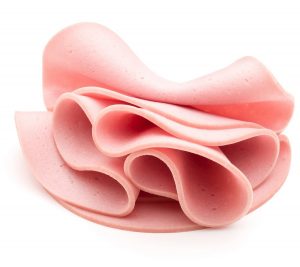Holiday parties and gatherings mean more trips to nail and hair salons for some. But if you’re not careful, you might end up picking up more than you bargained for.
In a recent small survey of nail and hair salon clients, more than two-thirds said they’d had one or more health issues after visiting a salon. These included skin problems, fungal infections and respiratory symptoms.
“When it comes to safety, the most important thing is being aware of the dangers present in salons,” said Lindsey Milich, lead author of a study based on the survey. She’s a research analyst at the Rutgers School of Public Health in Piscataway, N.J.
Nail and hair salons generally offer a wide range of services. Manicures, pedicures, applying artificial nails, removing hair with wax, hair styling and hair coloring are common offerings.
However, many of these services involve exposure to chemicals that can be hazardous for the client or for the nail technician or stylist, the researchers said. These products can cause allergic reactions and skin irritation.
In addition, because many of the tools are reused from one client to another, it’s possible to pick up bacterial and fungal infections if proper sterilization techniques aren’t used.
The survey included 90 patrons of nail and hair salons from three counties in New Jersey. Nearly all (94 percent) were women. Survey participants were asked about health symptoms, as well as their knowledge of potential hazards and safety practices in salons.
About 42 percent they’d developed skin issues and 10 percent reported fungal infections after salon visits. These problems included itchiness to the hands or face, cuts, burning or tingling sensations, pain or redness around the nail area, athlete’s foot, finger or toenail fungus, and nail discoloration.
One in 6 survey participants reported respiratory symptoms, including runny nose, itching or watery eyes, trouble breathing and headache.
Across the board, the percentages for reported problems were higher for nail salons than hair salons.
Though the salon clients reported experiencing these problems after a salon visit, Milich noted that the study did not prove that these issues were caused by the salon.
Milich was also involved in a second study, which looked at the health of nail salon technicians. That study — led by Derek Shendell from the Rutgers School of Public Health — included 68 workers from 40 nail salons whose owners agreed to their participation.
Most of the nail salon workers were Asian women who said they’d had eye, nose, throat or skin symptoms they believed were related to their jobs.
The study found that most workers had received training only in English, not in their primary language. The researchers suggested that salon workers needed “comprehensive chemical use training,” and urged that more research be done on the extent of salon workers’ exposure to hazardous materials.
For those who frequent salons, what can you do to safeguard your health?
First, check that the salon appears clean and is licensed by your state’s cosmetology board, Milich advised. Also check that the salon properly sanitizes any hair or nail tools that are reused from client to client.
Dr. Debra Spicehandler, co-chief of infectious diseases at Northern Westchester Hospital in Mount Kisco, N.Y., agreed — adding that you also should make sure the equipment is sterilized in an “autoclave.” That’s a device that heats the tools to kill bacteria and looks like a small oven.
“If they’re just putting the tools in chemicals, that’s not enough,” said Spicehandler, who was not involved with the studies.
She also recommended going to a nail salon that uses a disposable plastic liner in the footbath used for pedicures.
Spicehandler said it’s better to have your cuticles pushed back than cut, but if sterile equipment is used, it’s OK to have cuticles cut.
If you do get an injury when they’re cutting, be sure to clean it well and apply an antibiotic ointment to the cut. “If you see any swelling or redness at the site of the cut, or you get an injury on the nail bed, see your doctor,” she said.
Spicehandler also said that people with diabetes need to be extra careful when getting pedicures. “It’s best to go to a podiatrist to get your nails cut, but you can get your nail color at the salon,” she said.
The study involving salon clients was published in the November/December issue of the Journal of Chemical Health and Safety. The study on nail salon workers was published last month in the Journal of Occupational and Environmental Medicine.
More information
The U.S. Department of Labor has more about staying safe at a nail salon.
Source: HealthDay
Copyright © 2025 HealthDay. All rights reserved.

















